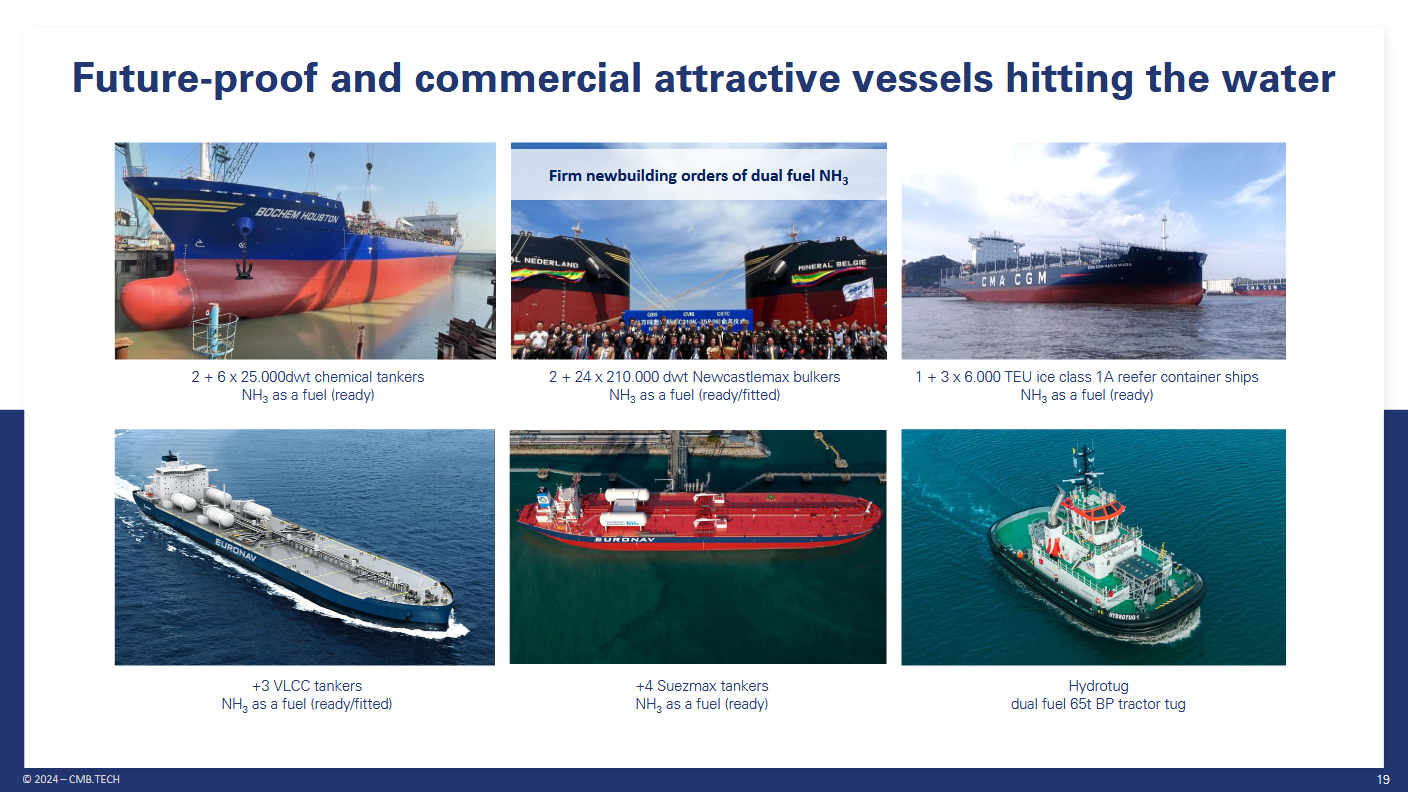International crude oil giant Euronav and CMB.TECH will merge to form a new clean shipping entity. The future fleet will feature nearly one hundred ammonia-fueled ships, including Ultramaxes, large-scale container vessels, long-range carriers and chemical tankers. Further details have also emerged about CMB.TECH’s ammonia fuel production project in Namibia, which is targeting a yearly production capacity of 185,000 tonnes of ammonia fuel by 2028.
Content Related to Euronav
Euronav, CMB.TECH unveil future plans for an ammonia-powered fleet
The Ammonia Wrap: an ammonia-powered shipping network in northern Europe and more
This week: an ammonia-powered shipping network in northern Europe, Sluiskil update, green projects in Uruguay, green ammonia in Ireland: a new update!, Euronav to develop ammonia-powered tankers, ammonia part of Equinor's net-zero by 2050 strategy, H2Site to install first on-site crackers in France and updates from Australia.
Picking bunker winners: the mono-fuel / dual-fuel duel
This week, DNV GL published its annual Maritime Forecast to 2050, concluding that “e-ammonia, blue ammonia and bio-methanol are the most promising carbon-neutral fuels in the long run.” DNV GL’s assumptions that determine this long run, however, suggest a significant mid-term reliance on fossil LNG. This risks locking the industry into a long-term emissions trajectory incompatible with the IMO’s 2050 GHG targets, in part because of significant fuel supply and infrastructure investments. These investments could become more ‘sticky’ than expected. A host of alternative opinions have been published in the days before and after DNV GL published its report. These suggest that, for ammonia, the long run could begin this decade. Among others, MAN ES has announced that its ammonia engine will be available for retrofits by 2025.


